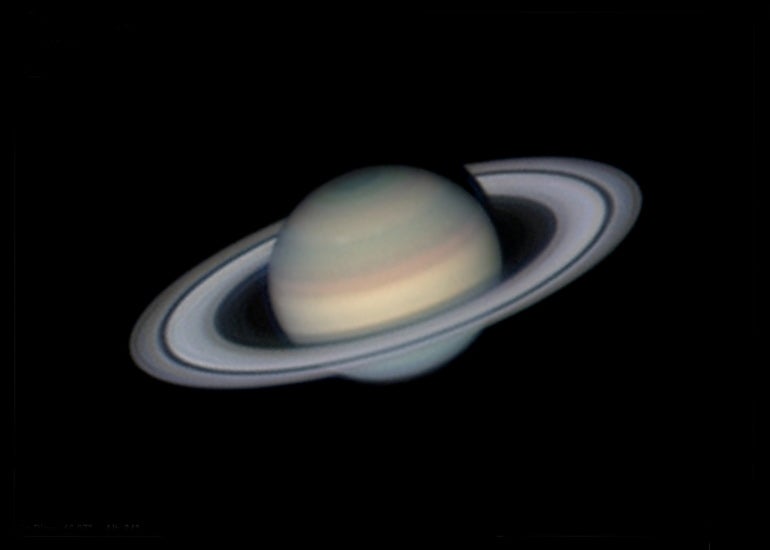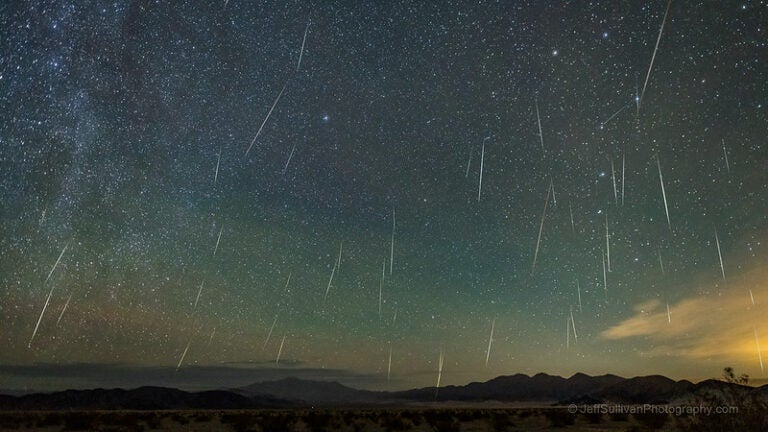Start looking for the ringed planet in early April, when it hangs low in the east-southeast around 10 p.m. local daylight time. The bright star Spica (Alpha [α] Virginis) works as a guide, as Saturn lies 15° east of the luminary among the much fainter background stars of Libra. The planet shines at magnitude 0.2, noticeably brighter than the 1st-magnitude star.
By opposition, Saturn rises earlier and provides great telescopic views by midnight local daylight time. It also brightens slightly to magnitude 0.1. “Saturn will look stunning through any size telescope near opposition,” says Astronomy Senior Editor Richard Talcott. “The planet’s rings are more open than they have been since 2006, so now is a great time to explore their structure.”
Through a telescope, Saturn’s disk spans 19″ across its equator while its rings cover 43″ and tilt 18° to our line of sight. “You’ll easily spot the Cassini Division that separates the outer A ring from the brighter B ring,” Talcott says. “And on nights with steady viewing conditions, you should even be able to spot the semitransparent C ring that lies closest to Saturn as well.”
And if you can peel your eyes away from the planet’s gorgeous rings, Saturn’s moons also offer a show. For example, many of the satellites are on parade April 28. Magnitude 8.4 Titan and magnitude 11.8 Enceladus pass close to the north of the planet while Dione, Tethys, and Rhea (magnitudes 10.4, 10.3, and 9.7, respectively) lie east of Saturn that same evening. “Titan shows up easily through any instrument, but a 4-inch or larger telescope should reveal the three to the east,” Talcott says. “Enceladus is more challenging and will require a larger scope because it’s so close to the brilliant rings.”
Fast facts
- Saturn is the second-largest planet in the solar system, and more than 750 Earths could fit inside it.
- Saturn is the only planet in our solar system that’s less dense than water, and it weighs only 95 times as much as Earth. As such, the planet would float in water.
- It takes Saturn about 29 years to orbit the Sun but a little less than 11 hours to rotate completely.
- Saturn’s quick rotation flattens it slightly, so its polar diameter is only 89 percent of its equatorial diameter.
- Saturn’s rings can be as thin as 33 feet (10 meters) thick and are made almost entirely of ice.
- Video: Easy-to-find objects in the 2013 spring sky, with Michael E. Bakich, senior editor
- Video: Tour the solar system: Saturn, with Bill Andrews, former associate editor
- StarDome: Locate Saturn in your night sky with our interactive star chart.
- The Sky this Week: Get your Saturn info from a daily digest of celestial events coming soon to a sky near you.
- Sign up for our free weekly e-mail newsletter.












